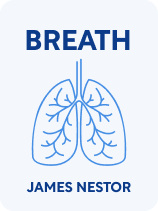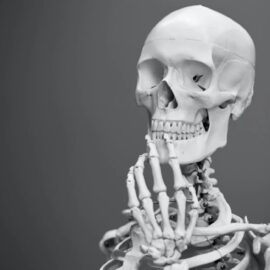

This article is an excerpt from the Shortform book guide to "Breath" by James Nestor. Shortform has the world's best summaries and analyses of books you should be reading.
Like this article? Sign up for a free trial here.
Is mouthbreathing bad for you? What happens when you breathe through the mouth instead of the nose?
It’s well-established that mouthbreathing isn’t the optimal way to breathe. When you breathe through the mouth, you inhale a lot of air very fast, but that air isn’t filtered. Breathing through the mouth also expends more energy.
Here’s why you should train yourself to rely on breathing through the nose.
Mouthbreathing
Is mouthbreathing bad for you? Mouthbreathing isn’t ideal because the mouth is meant to serve as a backup air pathway—it lets us take in lots of air quickly, but it lacks the tissues the sinus cavity uses to filter the air and move it along. Breathing through your mouth also consumes more energy, leading to bodily stress and fatigue. This stress pushes your heart to beat faster while your muscles rely more and more on anaerobic energy, another of the body’s backup systems, burning sugars and building up lactic acid. This leads to nausea, muscle weakness, and sweating.
This can be clearly demonstrated during exercise. Nestor explains that when you start working out, your muscles tap into anaerobic energy as your respiratory system tries to catch up. Anaerobic power from breaking down sugars is a turbo boost that evolution designed to kick in along with our fight-or-flight response. However, anaerobic respiration isn’t meant to be sustained for long periods, as it is when you consistently breathe through your mouth.
| The Chemistry of Respiration Nestor describes how the muscles derive energy from aerobic and anaerobic respiration without going into explicit detail about how they work on the molecular level, which involves two very different chemical processes. Both begin with glucose breaking down into pyruvic acid and adenosine triphosphate (ATP), the “energy molecule” our bodies use for fuel. In aerobic respiration, the pyruvic acid reacts with oxygen in a process called the Krebs Cycle, producing even more ATP for the body while releasing carbon dioxide and water as waste products. In anaerobic respiration, pyruvic acid is converted into energy through a process of fermentation. In yeast and bacteria, this produces alcohol, but in our bodies the waste product of anaerobic respiration is lactic acid, which is filtered out of the blood by the liver. While Nestor and many others blame lactic acid for the muscle pain experienced after exercise, research has debunked that notion. |
Aerobic respiration—taking energy from oxygen—is ideal for exercise, yet the more you pant and gulp to catch air, the more your heart races and the longer your body stays in the anaerobic zone. The solution Nestor gives is to breathe only through your nose and monitor your pulse. For optimal aerobic exercise, your pulse should not exceed 180 minus your age. (For example, if you’re 50, your exercising pulse should be under 130.) Mouthbreathing invariably pushes you over this limit.
(Shortform note: Whether aerobic is preferable to anaerobic exercise isn’t as straightforward as Nestor suggests. In short bursts, anaerobic exercise—such as sprinting or weightlifting—has benefits of its own. Anaerobic training strengthens muscles and increases endurance while forcing the body to burn even more calories while replenishing its oxygen content. If your goal is to burn fat, high-intensity anaerobic exercise can be more effective than aerobic exercise.)

———End of Preview———
Like what you just read? Read the rest of the world's best book summary and analysis of James Nestor's "Breath" at Shortform.
Here's what you'll find in our full Breath summary:
- Why you're probably breathing wrong
- The benefits of learning how to breathe properly
- The potentially dangerous side effects of mouthbreathing






